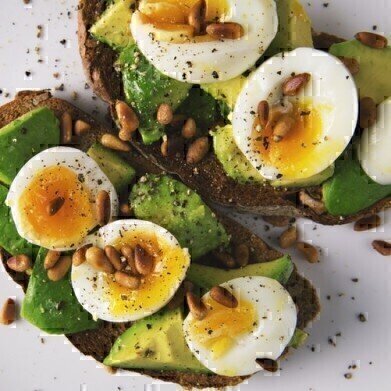LC-MS
What Exactly is Classed as Nutrient Dense?
Apr 27 2018
Dietary advice is not hard to find. Turn on any television, open any magazine or simply browse the internet on your tablet. With obesity increasing in all areas of the world, the health of the planet could be described as on a downward cycle where weight is considered. The answer is to increase the amount of exercise we all take and eat fewer calories.
But whilst taking exercise is straightforward, eating fewer calories can have unwanted consequences alongside the desired weight loss. If we simply carry on eating our normal foods but in smaller portions, we could inadvertently reduce the quantity of nutrients we eat. After all, nutrients are just as important as calories as they include all the vitamins, minerals and oils so essential to out health. So how can we solve this conundrum — eat less but stay healthy?
Empty calories or nutrient dense?
It is important to get the greatest benefit from the foods we eat, especially if we are eating less of them — as we might if on a calorie restricted diet. Calories are important in that they give you energy — but some foods give you just calories with no nutrients. Empty calories — foodstuffs that give you lots of calories but don’t have many nutrients. Typically, these are classed as foods that are high in sugars and oils. Fizzy drinks, cakes, biscuits, pizza and sausages are all examples of empty calorie foodstuffs.
One way to ensure you are getting the biggest benefit from the food you eat is to eat nutrient dense foods. The idea behind nutrient dense foods are that you get relatively more nutrients for fewer calories consumed. In other words, nutrient dense foods are rich in vitamins, minerals and other nutrients that we need for a healthy life compared to the calories consumed.
As an example, think of two loaves of bread.
- White loaf: 80 calories per slice, very few nutrients.
- Wholemeal loaf: again, 80 calories per slice. But, wholemeal bread contains more protein, more minerals like magnesium and potassium, double the fibre and more vitamins.
Nutrient dense foods
Scientists use many different analytical techniques to assess the nutrient density of different foods. Chromatography is one technique that is widely used in food analysis as discussed in the article, Utilisation of LC/MSMS (QTRAP) and Polarity Switching for the Quantitative Analysis of Over 300 Pesticides in Crude QuEChERS Extracts from Various Fruit and Vegetable Matrices.
So which foods are classed as nutrient dense? Well, as might be expected, vegetables and fruit that are brightly coloured are classed as nutrient dense. Fortified foods —bread with added vitamins for example — are also classed as nutrient dense. Wholegrain rice or pasta is more nutrient dense that the usually eaten varieties.
For a snack — try cocoa rich dark chocolate. It is high in fibre, minerals and antioxidants.
Digital Edition
Chromatography Today - Buyers' Guide 2022
October 2023
In This Edition Modern & Practical Applications - Accelerating ADC Development with Mass Spectrometry - Implementing High-Resolution Ion Mobility into Peptide Mapping Workflows Chromatogr...
View all digital editions
Events
Sep 22 2024 Messina, Italy
Analytica Anacon India & IndiaLabExpo
Sep 26 2024 Hyderabad, India
Sep 29 2024 Singapore
Oct 06 2024 Liverpool, UK
Oct 09 2024 Birmingham, UK









-(300-x-250-mm)_1.jpg)




